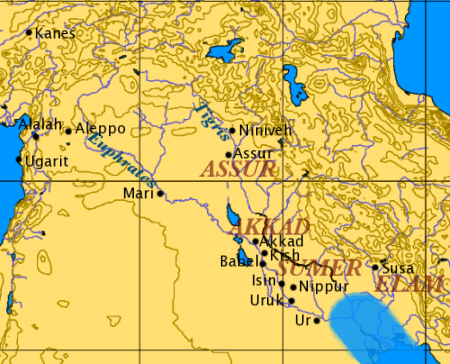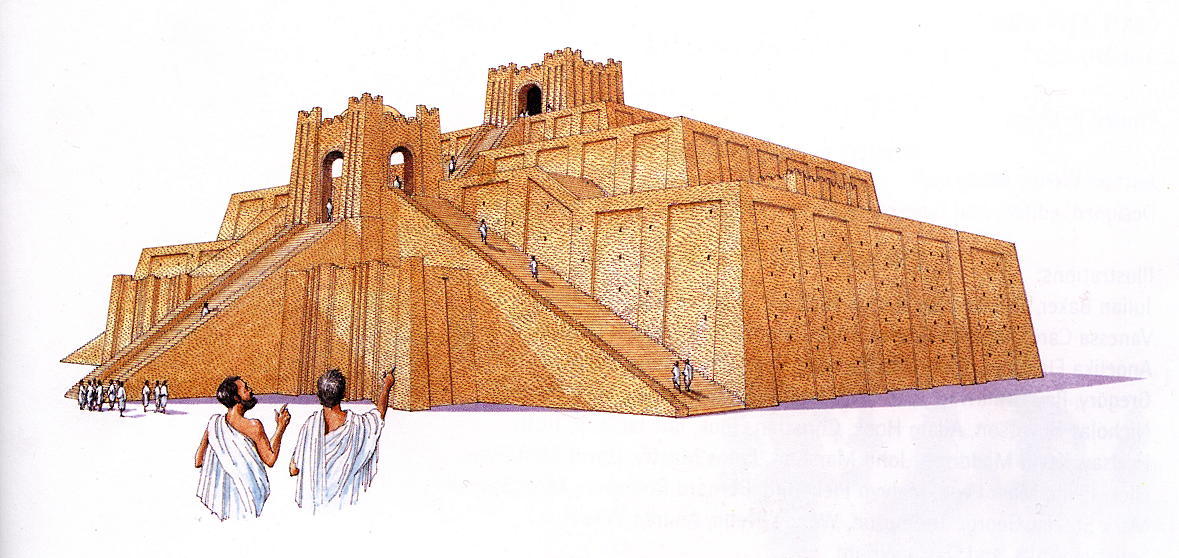| |
![]()
Individual Task
Mesopotamia
ancient region of Asia, the territory about the Tigris and Euphrates rivers, included in modern Iraq. The region extends from the Persian Gulf north to the mountains of Armenia and from the Zagros and Kurdish mountains on the east to the Syrian Desert. From the mountainous north, Mesopotamia slopes down through grassy steppes to a central alluvial plain, which was once rendered exceedingly fertile by a network of canals.

Earliest Cultures
The south was long thought to be the cradle of civilization until earlier settlements (which probably date from about 7000 ) were found in N Mesopotamia; Jarmo, the earliest of these, was superseded by a succession of cultures: Tell Hassuna, Samarra, and Tell Halaf. Tell Halaf, the most advanced of these early cultures, is famous for Halaf ware, the finest prehistoric pottery in Mesopotamia. It is found at such sites as Nineveh and Tepe Gawra. While these advances were being made in the north, civilization was just beginning in the south, particularly at Eridu. The Al Ubaid culture that followed flourished in both N and S Mesopotamia.

The Proto-Literate and Early Dynastic Phases
During the next period (called the proto-literate phase) the south was the important region, and the transformation of the village culture into an urban civilization took place. Uruk (modern Tall al Warka), the foremost site at the beginning of this period, has yielded such monumental architecture as the temple of Inanna and the ziggurat of Anu. Also found at Uruk were tablets including the earliest pictographic writing. At the same time and apparently independently, smaller organized settlements arose at sites such as Tell Hamoukar and Tell Brak in NE Syria and Hacinebi and Arslantepe in SE Turkey.
The early dynastic phase that followed saw the development of city-states all over the Middle East as far as N Syria, N Mesopotamia, and probably Elam. The famous sites of this period are Tell Asmar, Kafaje, Ur, Kish, Mari, Farah, and Telloh (Lagash). The Sumerians (see Sumer), the inhabitants of these city-states of S Mesopotamia, were unified at Nippur, where they gathered together to worship Enlil, the wind god. The famous first dynasty of Ur came at the end of the early dynastic period.
Dynasties and Empires
Sargon founded (c.2340) the Akkadian dynasty, the first empire in Mesopotamia, whose example of empire building was later followed by the old Babylonian dynasty and late Assyrian Empire (see Babylonia; Assyria). There was also a great cultural exchange between the Mesopotamians and the Elamites (and other Iranians), who for centuries had threatened each other. Mesopotamia still had prestige at the time of Alexander the Great, but later it was generally a part of the Roman Empire. The Arabs took it from the Sassanid Empire, and it rose to great prominence after Baghdad was made ( 762) the capital of the Abbasid caliphate. This glory was destroyed when the Mongols under Hulagu Khan devastated the area in 1258, destroying the ancient irrigation system.

The Region in Modern Times
In the centuries following, Mesopotamia never regained its former prominence. In World War I, however, it was an important battlefield. The kingdom of Iraq was formed in 1921 (Iraq became a republic in 1958) and is of international importance because of its rich oil fields, but its status in the world is enhanced by the rich archaeological finds of the incredibly distant past.